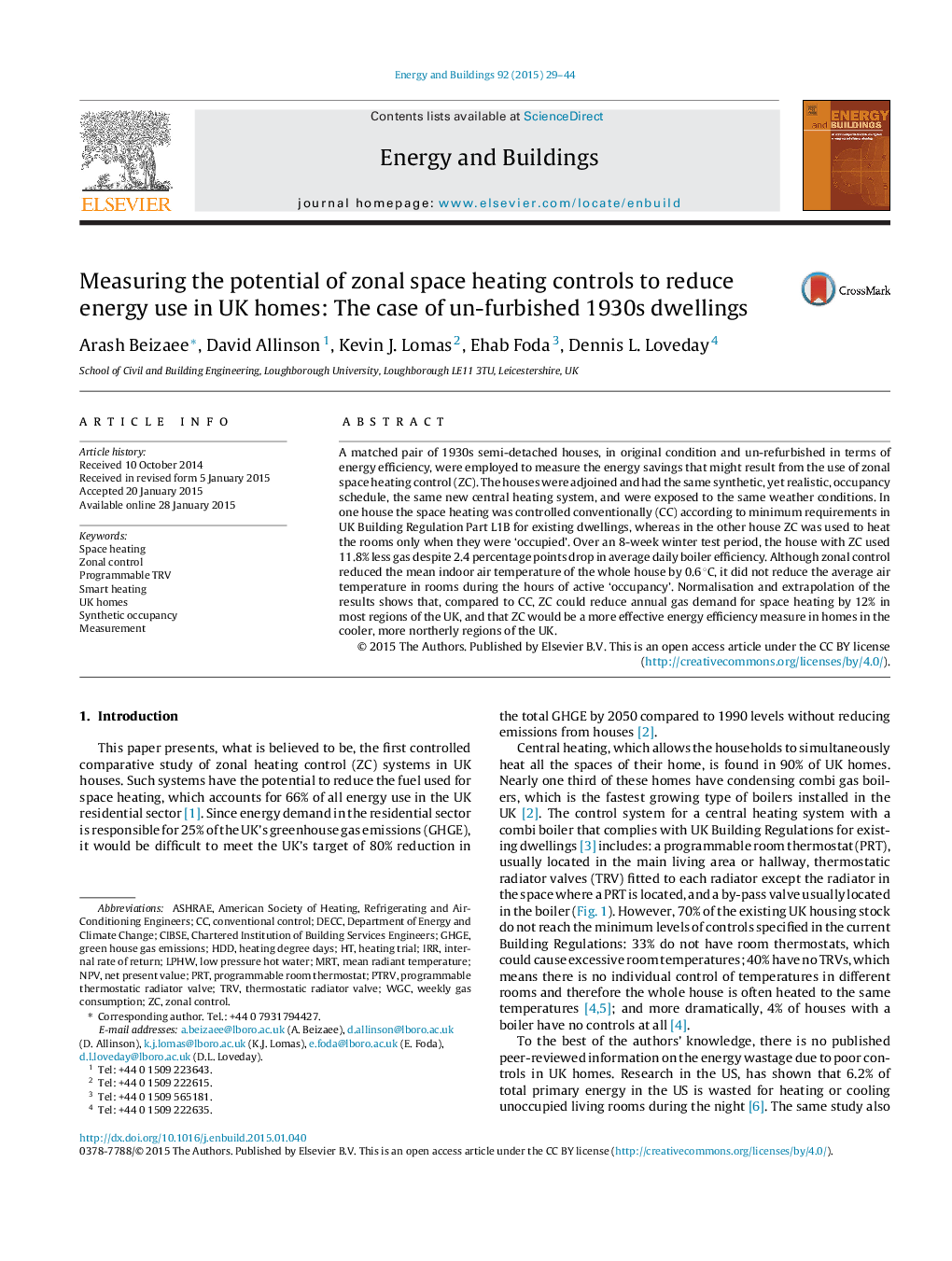| Article ID | Journal | Published Year | Pages | File Type |
|---|---|---|---|---|
| 6732011 | Energy and Buildings | 2015 | 16 Pages |
Abstract
A matched pair of 1930s semi-detached houses, in original condition and un-refurbished in terms of energy efficiency, were employed to measure the energy savings that might result from the use of zonal space heating control (ZC). The houses were adjoined and had the same synthetic, yet realistic, occupancy schedule, the same new central heating system, and were exposed to the same weather conditions. In one house the space heating was controlled conventionally (CC) according to minimum requirements in UK Building Regulation Part L1B for existing dwellings, whereas in the other house ZC was used to heat the rooms only when they were 'occupied'. Over an 8-week winter test period, the house with ZC used 11.8% less gas despite 2.4 percentage points drop in average daily boiler efficiency. Although zonal control reduced the mean indoor air temperature of the whole house by 0.6 °C, it did not reduce the average air temperature in rooms during the hours of active 'occupancy'. Normalisation and extrapolation of the results shows that, compared to CC, ZC could reduce annual gas demand for space heating by 12% in most regions of the UK, and that ZC would be a more effective energy efficiency measure in homes in the cooler, more northerly regions of the UK.
Keywords
TRVDECCCIBSEWGCPRTHDDIRRMRTASHRAEnet present valueAmerican Society of Heating, Refrigerating and Air-conditioning EngineersMeasurementHeating degree daysThermostatic radiator valveNPV یا negative predictive valueMean radiant temperatureInternal rate of returnDepartment of Energy and Climate ChangeConventional ControlSpace heating
Related Topics
Physical Sciences and Engineering
Energy
Renewable Energy, Sustainability and the Environment
Authors
Arash Beizaee, David Allinson, Kevin J. Lomas, Ehab Foda, Dennis L. Loveday,
